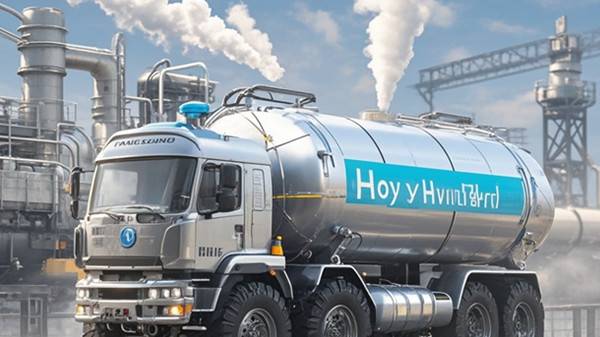The Difference Between Energy Storage Batteries and Power Batteries
At present, energy storage batteries generally refer to lithium-ion energy storage batteries. Of course, due to the particularity of energy storage batteries, they are different from power batteries in many aspects, mainly including the following points:
1. Different application scenarios
• Energy storage batteries: small household energy storage and large base station energy storage. Large base station energy storage is mainly used for peak shaving and valley filling with batteries, grid frequency modulation, wind power and photovoltaic rectification, etc., among which peak shaving and valley filling are the main methods to earn electricity price difference.
• Power batteries: They are specially used to provide power for mobile devices such as electric vehicles, electric bicycles, and electric tools. Due to the volume and weight restrictions of automobiles, start acceleration, and national subsidy policies, power batteries have higher requirements in energy density, volume density, charge and discharge rate, battery safety, etc., and the cost is naturally higher.
2. Charge and discharge characteristics
• Energy storage batteries: usually have a lower charge and discharge rate, and the requirements for charge and discharge speed are relatively low, and they pay more attention to long-term cycle life and energy storage efficiency. Of course, some special application scenarios may require high-rate batteries, such as energy storage batteries used for frequency modulation in power grids, which generally require the use of high-rate batteries.
• Power batteries: need to support high-rate charging and discharging to meet the high-power output requirements of vehicle acceleration, climbing, etc.
3. Energy density and power density
• Power batteries: For passenger cars, it is natural to hope that smaller volume and weight can carry more energy, such as the energy density of gasoline. Therefore, automotive lithium-ion batteries also need high energy density and high power output to meet the requirements of electric vehicles for cruising range and acceleration performance.
• Energy storage batteries: For batteries that shave peaks and fill valleys, they are generally charged and discharged twice a day, but energy storage batteries generally have a larger space to store, so there are no special requirements for the energy density and power of the battery cells. They pay more attention to safety and cost. They usually use more stable electrochemical materials and more relaxed battery structures, which can store more electrical energy and maintain stable performance during long-term operation.
4. Cycle life
• Energy storage battery: Since energy storage equipment is generally a long-term investment, the owner unit generally requires it to have a longer working life and cycle life. For example, the battery for peak shaving and valley filling generally has a payback period of 4 to 6 years, and the corresponding life requirement may be longer, requiring 8 years or more.
• Power battery: The general life requirement of power battery is 5 years or 300,000 kilometers, and the number of cycles is about 1,000 to 2,000 times.
5. Cost
• Energy storage battery: Due to the differences in application scenarios and performance requirements, energy storage batteries usually pay more attention to cost control to achieve the economy of large-scale energy storage systems.
• Power battery: Under the premise of ensuring performance, the cost is also continuously reduced, but the cost is relatively high.
6. Safety
• Power battery: Since the power battery is on the car and has a variety of application scenarios, it is especially necessary to ensure that the car does not explode in the event of a traffic accident.
• Energy storage battery: The system is large in scale, and once a fire occurs, it may cause more serious consequences. Therefore, the fire protection standards for energy storage batteries are usually more stringent, including the response time of the fire extinguishing system, the amount and type of fire extinguishing agent, etc. However, since the energy storage battery is in a non-moving state, there will be no vibration, ball hitting, etc. during product design.
7. Material selection
• Power battery: As mentioned above, power batteries require a higher energy density, so the production of power batteries requires high energy density and good rate performance. Therefore, positive electrode materials with higher specific capacity are usually selected, such as high nickel ternary materials, lithium iron phosphate, etc., and negative electrode materials generally choose graphite, etc. Now passenger car power batteries are also developing continuously, and there are proposals to use solid-state batteries, that is, use solid electrolytes or lithium metal as negative electrodes.
• Energy storage battery: More emphasis is placed on long cycle life and cost-effectiveness, so the positive electrode material may choose lithium iron phosphate, lithium manganese oxide, etc. In terms of electrolyte, energy storage batteries have relatively low requirements for ion conductivity, but high requirements for stability and cost.
Hydrogen production by electrolysis of water is the most advantageous method for producing hydrogen. Utrasonic coating systems are ideal for spraying carbon-based catalyst inks onto electrolyte membranes used for hydrogen generation. This technology can improve the stability and conversion efficiency of the diaphragm in the electrolytic water hydrogen production device. Cheersonic has extensive expertise coating proton exchange membrane electrolyzers, creating uniform, effective coatings possible for electrolysis applications.
Cheersonic ultrasonic coating systems are used in a number of electrolysis coating applications. The high uniformity of catalyst layers and even dispersion of suspended particles results in very high efficiency electrolyzer coatings, either single or double sided.
About Cheersonic
Cheersonic is the leading developer and manufacturer of ultrasonic coating systems for applying precise, thin film coatings to protect, strengthen or smooth surfaces on parts and components for the microelectronics/electronics, alternative energy, medical and industrial markets, including specialized glass applications in construction and automotive.
Our coating solutions are environmentally-friendly, efficient and highly reliable, and enable dramatic reductions in overspray, savings in raw material, water and energy usage and provide improved process repeatability, transfer efficiency, high uniformity and reduced emissions.
Chinese Website: Cheersonic Provides Professional Coating Solutions



